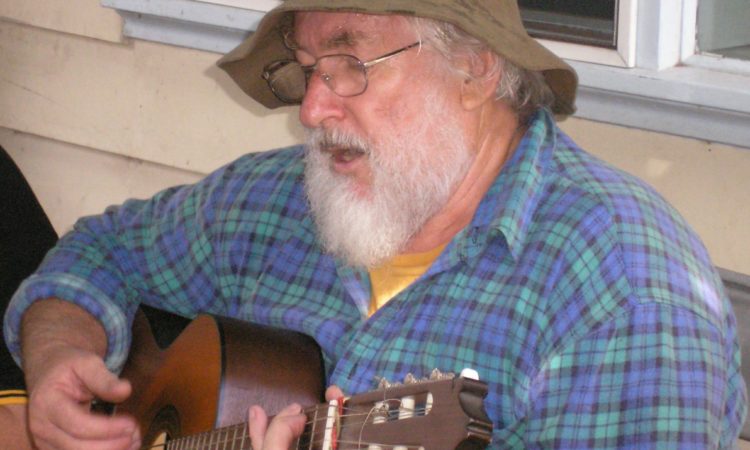For the next few ‘episodes, I am handing over my blog to interviews with people who embody inspirational aspects of Australian culture.
First up, an interview with Mike Puleston, long-standing organiser in the Victorian branch of the Australian Greens. When I told Mike I wanted to interview him because I found what he stood for inspirational, he replied with typical Australian laconic humor: “I’m not inspirational, I’m just a bloody old ratbag!”
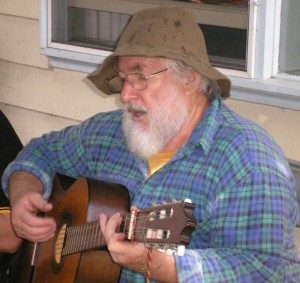
Nicole: Mike, please introduce yourself – tell me a little about your personal history:
Mike: I grew up in the working-class western suburbs of Sydney. My Dad and Mum were English immigrants. Dad was a building worker, and Mum had been a factory machinist before becoming a full-time wife and mother. I managed to get a scholarship into Sydney Uni in 1965, a time of great intellectual, political and social ferment. Australia was supporting the US in Vietnam, and young Australian men were being drafted to fight this dirty war, so I got involved in the opposition. Along with this I developed a leftish, soft-socialist outlook which I’ve kept since then. Through doing all kinds of part-time jobs, I came to see the importance of unionism.
My career was spent in various areas of education, secondary and tertiary, specialising in English as a Second/Foreign Language. Thus I came into contact with people of many ethnicities, both in Australia and elsewhere. This helped me to see the world beyond the Anglo-Australian viewpoint. I remained a unionist, serving as local rep. in various workplaces. Even now that I have retired, I continue to pay union subs and proudly carry a union card.
I joined the Australian Labor Party in the 60s, and worked hard at the 1972 federal election, when Gough Whitlam ended 23 years of conservative rule, and instituted a set of reforms that at least brought Australia into the 1960s. But in 1975 conservative forces inside and outside politics conspired to overthrow Whitlam in what amounted to a bloodless coup, and the conservatives were back again.
I went on working for the ALP, but grew increasingly involved in the anti-uranium movement and other environmental causes, joining the Movement Against Uranium Mining, Friends of the Earth etc. During the 1980s I came to see that the ALP had been so terrified by its 1975 experience that, even when back in government, it would never again pose a serious opposition to conservative thinking. The party embraced neo-liberal economic philosophy, which really permeated all aspects of political and social life, so that the ALP increasingly merely presented a slightly more humane side to the same coin which had the conservatives on the other side.
Thus in 1984 I joined the campaign to get Midnight Oil singer Peter Garrett into the Senate, joining his Nuclear Disarmament Party, even establishing a local branch. Garrett was not successful, and I withdrew from political activity, as I spent six years working and travelling overseas. This experience, which included living in Borneo for three years, made me more aware of conservation issues, especially the destruction of rainforests and the plight of indigenous people such as the Penans.
Settling in Melbourne in 1994, I joined the fledgling Australian Greens, and have been active in the Party ever since.
N: The first formal ‘green party’ in the world was established in Tasmania in 1972, out of the campaign to save Lake Pedder. Other Australian state green parties emerged in the 1980s, which then formally consolidated into a national party over the course of the 1990s. Over the last decade, the party has steadily increased its electoral support, attracting over 9% of the primary vote in the last Federal election in 2007. In some Victorian electorates, such as HIggins, the primary vote is as high as 33%, and support in the seat of Melbourne could be strong enough to send a Green to the lower house in the next Federal election. Currently, the Greens have five federal Senators, 21 elected members of State parliament, and over 100 local councillors. The Greens are now recognized as Australia’s third major political party after the Australian Labor Party (currently holding power Federally) and The Liberal Party (Australia’s conservative party).
Mike, why do you think electoral support for the Greens has been growing so strongly in Australia. For the benefit of American readers, I think we’ll need to first explain first the difference between the Australian and American versions of democracy. Our voting systems are very different – our system of ‘proportional’ and ‘preferential voting’ enables the growth of third parties whereas this is all but precluded in the American ‘first past the post’ system. Did you want to have a stab at explaining the key features of our voting system?
M: OK. There are two main points of difference between the Australian and US systems, that enable small parties such as the Greens to make some impact in government. The first is that in the upper houses, at both federal and state levels (federal Senate and state Legislative Councils), as well as in many local government areas, there is a form of proportional representation. Thus if a party gets 20% of the vote it gets, more or less, 20% of the seats. It’s more like the European systems. The second difference is that we have a preferential system of voting. Thus in a local electorate, voters don’t just put a cross against candidate Judy Bloggs, but number all candidates in their order of preference. If no candidate gets 50+%, candidates are progressively eliminated and their votes redistributed, until one candidate gets 50+% and is elected.
As an example, in the coming elections in the state of Victoria, in a few seats, it is likely that no candidate will get 50+% on the first account. The outcome could well be Greens 33%, Labor 42%, Liberals (= conservatives) 20%, other parties, independents etc 5%. The Liberals will probably, in order to spite Labor, advise their voters to put Greens at No. 2, as may some of the other parties and independents. Thus the Greens could get the magic 50+% through the flow-on of second preference votes.
N: In addition to the electoral enablers, what do you see as the key social and cultural reasons why more people are voting for the Greens?
M: We’re getting a better-educated, more-travelled, generally more aware and sophisticated society developing, and these people can see through the Tweedledum-Tweedledee relationship between the two major parties. There is really not much difference between them, more a matter of style than substance, with much focus on the contest between the two leaders. There is huge cynicism and lack of trust. The Greens are seen as honest, and focussing more on issues than personalities – social justice, the environment, peace and disarmament.
N: Why did you join The Greens? You started off life as an ALP man, which has historically positioned itself as Australia’s left leaning party and in this parallel to the American Democrats.
M: I have touched on this in my introduction above. But I’d like to go on and say that I think the Greens today are where the Australian Labor Party was in the late 19th century. In those days politics was very much about large landowners versus business interests. Few people thought that a political party dedicated to representing the interests of ordinary working people would ever form a national government. But it did, first in Australia and New Zealand, then in Britain, Scandinavia and other European countries. Social democracy was a new way of thinking. With time, in Australia and Britain especially, the social democrats parties came to resemble the parties they once opposed. The Greens are now bringing a different way of thinking.
N: How would you describe the political philosophy and principles of the Greens, and how well does the party put those principles into practice?
M:Whew! Big question. Go to the Australian Greens website…… But anyway, Greens principles are based on the four pillars of social justice, the environment, peace and disarmament. This is the template for policy development. Everything flows from that. The Greens have a very localised, grassroots system of organisation and policy development, based on consensus decision making. Compared with the ALP, there is great scope for individual members to have an input in what the Party does. I must say I find the decision making processes frustrating at times. They can be very time-consuming. The advantage is that once a decision is reached, it has broad-based support. But I do wonder if this system can be maintained in a pure form as the Party gets bigger and more involved in government. Within the Party I do argue for a modified version of CDM.
I am not so naive as to think that the Party will be without inner stresses and strains. One potential fault line is that of social justice/environment. The two might not be entirely compatible. For example, in northern Queensland, an issue has arisen with relation to the management of some wild rivers. Environmentalists want the rivers preserved in their original state. But some aboriginal groups want to practice agriculture along the rivers, which run through their lands. The Greens support aboriginal self-determination. So there’s a potential conflict here.
Another potential divide is that of idealism versus pragmatism. Does the Party stay pure and true to its principles, and risk being no more than a pressure group, or make some compromises in order to gain greater support and influence? That’s politics. No easy answer there, though I tend towards the pragmatic end.
So far, by sticking to our principles, the Greens are running at about 10-15% of the vote, more in some areas. But that’s still a long way from what we need. Still, we are represented at local, state and federal levels, and have favourably affected outcomes.
N: There is a huge amount of eco-innovation going on at the grassroots level in the USA, so much so I can’t keep track of all the ‘green’ initiatives and little eco-groups even in my adopted hometown of Pittsburgh. However, a recent international survey of national concerns about global warming, put the USA close to the bottom of the list when it came to people believing global warming is a “very serious issue” (44% of those polled). Australian’s weren’t asked their views apparently, but how would you rate our awareness? We are after all one of the nations currently suffering the most from climate change.
M: Awareness of environmental issues, including climate change, is growing here, particularly among the young. Overall, I would say this awareness is higher than in the USA, but then again it’s not absolute. Who would have thought that Arnie would be doing such good things in California, for instance? (Or have I got that wrong?) It’s a great pity that Copenhagen collapsed, as this caused a lot of Australians to put climate change in the “too hard” basket. Thus our conservative Federal Opposition has been able to push a “climate change is bunkum” barrow. The ALP Government is marginally better, but still are holding to 5-25% CO2 reductions, while the Greens are pushing for 40%.
But still, a lot is going on at the local level, with householders and local governments reducing their energy consumption, recycling, saving water etc.
N: You are now trying to ease your way out of leadership positions at the local level in the party, and you and your wife have set off on amazing adventures traveling around Australia, seeing as many of our remaining wilderness areas as you can. Australia is roughly the same size as the United States, so this is no small task. What have been some of the highlights and downers of your trip so far?
M: Kairen and I did an eight month camping trip through the western two-thirds of our country last year. We got to some wonderful, beautiful places, some of them very remote. It was not enough time to see it all, and we’ll be back, as well as covering the rest of the country. Our national parks services are doing a fantastic job of protecting wilderness areas, often on inadequate budgets. It was also good to see what private philantrophic organisations were doing to buy up clapped-out farms and regenerate them. We were also grateful to meet indigenous groups and to learn more about their perspectives. As they see it, people belong to the land, not the other way round. I guess the trip strengthened my resolve to do more to protect the land we belong to.
Disappointments? There are a lot of dickheads out there, littering, driving dangerously and without regard to fragile environments, generally behaving disrespectfully to the land and other people. Probably no worse than in any other country though.
N: I don’t think any Americans realise that Australia’s current Federal environment minister, Peter Garret, was a former national rock mega – star, leader of the agit-prop Oz rock band Midnight Oil. However, Republican Schwarznegger appears to take environmental sustainability more seriously and tackling the hard issues better than lefty Peter – what went wrong? Should we be turning to Hollywood action heros rather than rock stars as environmental leaders?
M: Poor Peter was swallowed up by the ALP Party machine. They seduced him in order to pull the environmental vote, then neutered him. He isn’t a very effective minister, or isn’t allowed to be. A warning of the perils of trying to change the system from within. Arnie? I don’t know. I guess if public figures have the right ideals, and are strong enough, they can make a difference. But I wouldn’t be going out headhunting celebrities to the cause. They have to find their own way.
I’d like to add something. One of the biggest battles as you get older is to ward off cynicism. When you see what’s going on around you, it’s so easy to be cynical. But cynicism corrodes the spirit, and I think contributes to ageing, and maybe physical and mental illness. I find that working with the mostly younger people in the Greens helps me keep my equilibrium. There are many fine young people in this Party, and the world would be a better place if it were run by the likes of them.
Their time is coming, and one reason I am stepping back from taking a more prominent role is to give them space to do things their way. I will continue to support in whatever way I can. I hope I can go on giving the benefit of my experience – and benefitting from the freshness and idealism that our younger members have.
N: I’d personally vote for AC/DC – the entire band. They’d at least do a good job at representing the alcohol overindulgence vote in Australia, which would be pretty huge. And their campaign parties would be awesome! Thanks Mike!
M: Pleasure!
And finally here are some beautiful pictures from Mike’s recent travel’s around the Australian outback:
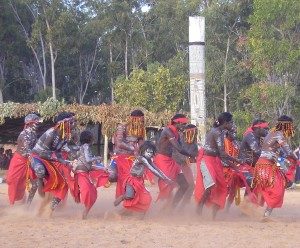
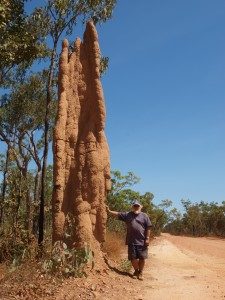
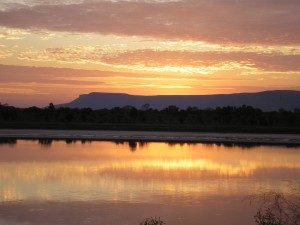
Upcoming topics: the Australian electronic underground, community radio sector, independent film
